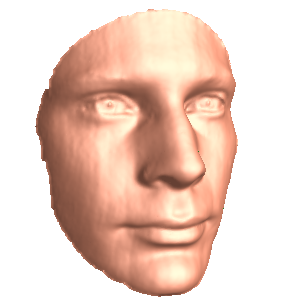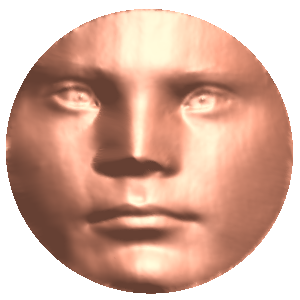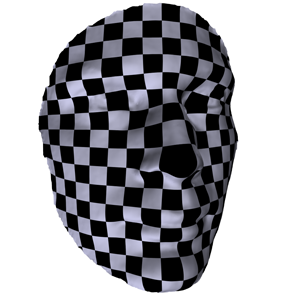
|

|

|
|
a. Input mesh
|
b. Output mesh
|
c. Texture mapping induced by the harmonic map
|
Algorithm Description
Disk harmonic map computes a harmonic map from a topological disk to a planar convex domain. User needs to specifiy the
boundary map first. The result map is a quasi-conformal map. More constraints, such as the correspondances between
feature points, feature curves can be easily added to the algorithm. The algorithm can be generalized to volumetric
case straightforwardly.
Input and output
- The input is a genus 0 mesh with a single boundary.
- The output is the mesh with uv coordinates, which is shown by the frame b.
- The checker board texture mapping induced by the harmonic map is shown in frame c.
Command
disk_harmonic_map.exe face.nf50k.m face.nf50k.uv.m
viewer.exe face.nf50k.uv.m -texturemap checker.ppm
Boundary Condition
The boundary vertices of the mesh are mapped to the boundary of a planar convex domain. The harmonic map
will be a one-to-one map.
Numerical Stability
The numerical stability is mainly determined by the quality of the triangulation. If the most corner angles
of all triangles are acute, then the computation process is stable. ( The condition number of the linear system is relatively small.)
Example
The input face mesh has 50k faces. The computational time is 3-4 seconds on a PC with 3.0 GB of RAM, 3.60 GHz CPU.
The data set and the source can be downloaded.



